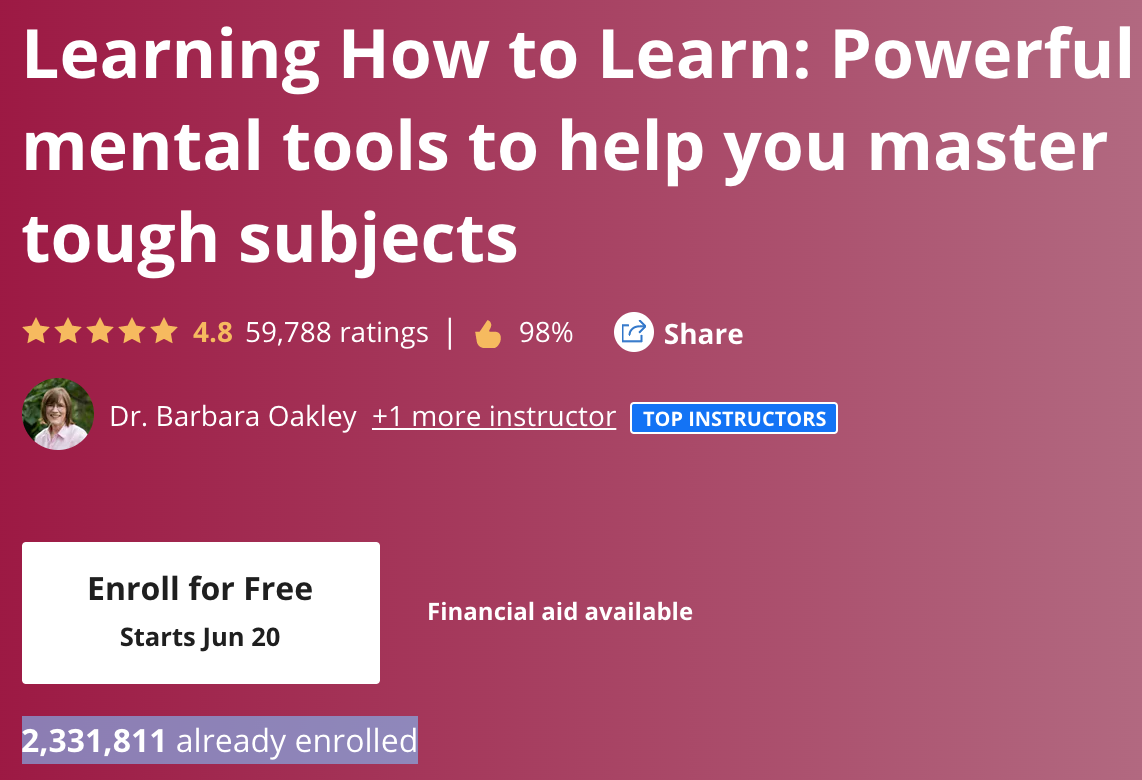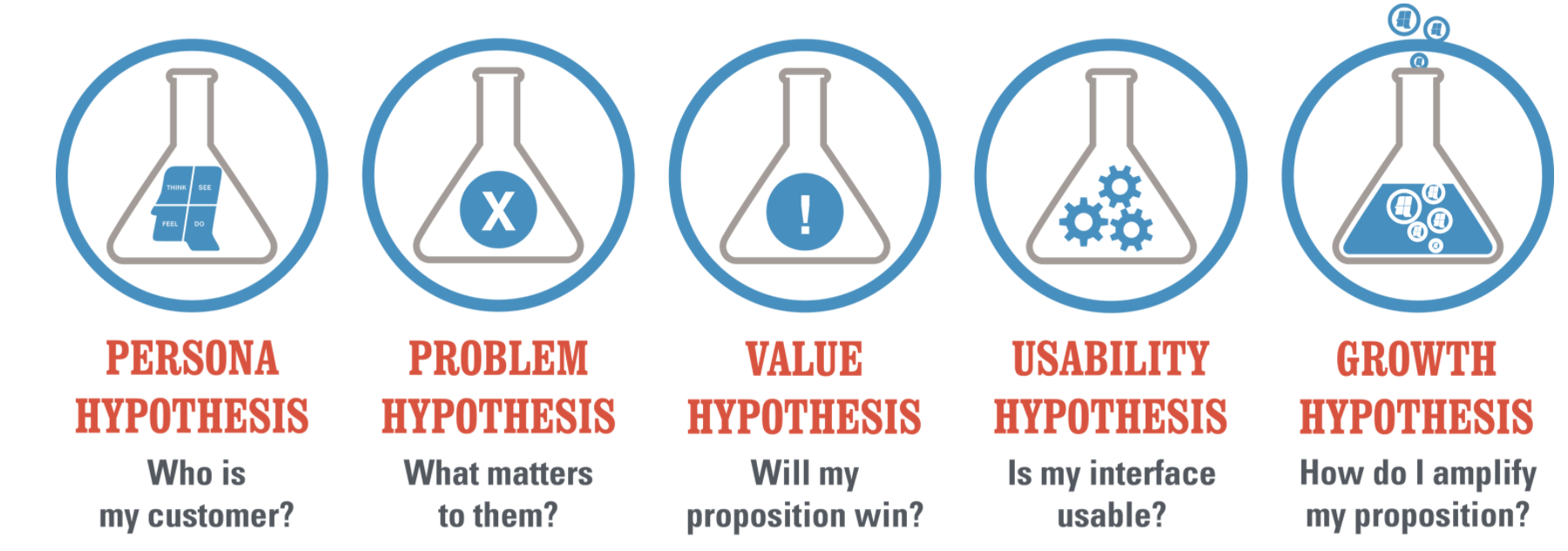Welcome to this online course creation guide - everything you need to know about making your course.

You're thinking about creating an online course - this is an exciting opportunity which can be very rewarding. Online courses allow you to share your hard-earned knowledge with thousands of students, and have led to many authors earning a decent side-income or in some cases a full-time living. But right away, there are a lot of confusing decisions to make, especially if this is your first course: What should I teach? How should I structure the material? Where should I sell the course? What equipment and software should I use? The questions mount up, and it can be tempting to say "maybe another time". It doesn't have to be that way! In this guide, I am going to walk you through everything you need to know in order to launch a successful online course. This advice is born of first-hand experience creating my own online courses which I've sold to over 10,000 students. This guide will help you avoid the three most common mistakes course creators make:
- Building the wrong course (and hence not getting sales)
- Getting stuck during the creation process
- Creating something great but failing build an audience and conduct effective marketing
This is a comprehensive overview, so it's divided into sections. It also contains frequent cat pictures for motivation.
Contents
- Part 1: Mindset - Are you ready to create an online course?
- Part 2: Deciding What to Teach
- Part 3: Customer Discovery & Validation
- Part 4: Course Positioning
- Part 5: Working on your own vs. working with others
- Part 6: Structuring The Course Content (Curriculum)
- Part 7. Getting Started - Your Equipment & Software
- Part 8: Processes For Getting the Course Done
- Part 9: Selling on a marketplace vs. hosting your own site
- Part 10: Launching and Selling Your Course
1. Mindset - Are you ready to create an online course?

What Exactly Is An Online Course
You may have a clear idea about what an online course is already, but it's worth pointing out that courses fall somewhere on a spectrum. You could consider that the most basic type of course is delivered via email - which requires no tech apart from an email service provider. At the other end of the spectrum there are fully accredited online university degrees, which take years and often require rigorous examination and one-on-one tutoring sessions via video chat.
A typical online course is usually somewhere in the middle of these two extremes. These courses are more flexible since lectures can be viewed any time, and tend to take students somewhere between a few hours and a few months to complete. These more typical courses are the subject of this guide.
Why Would You Want to Create An Online Course
There are a lot of excellent reasons to create an online course. Some of the most prevalent include:
- Having a Massive Impact: Online learning is booming. An online course allows you to potentially reach more students in a month than many full-time school or university teachers encounter in a lifetime. This kind of leverage is incredibly powerful and can really allow you to spread your message to a lot of people. Famous online courses such as Dr Barbera Oakley's "Learning How to Learn" have more than 2 million students enrolled.

- Generating Passive Income. Because online courses tend to have a higher price point than ebooks, and don't require large traffic volumes like adverts to make meaningful income, many entrepreneurs find them highly effective as a way to make money.
- Building A New Career. Some course authors decide to make a full-time career in online education through by growing their course online business. Naturally this takes time and hard work, but once a critical mass of courses and students is reached an author can switch from "side hustle" to "full time gig" should they wish to.
- Bundling With Other Services: For some authors, their course is part of a package of services they offer, which might also include consulting, coaching and mentoring.
- Offer Clients Who Can't Afford 1-1 time an Alternative: An online course can be a way to make services which would be too expensive for more clients if they were in the form of one-on-one consultations suddenly much more affordable.
- Build Reputation: Creating an online course (particularly a successful one) is a powerful signal that you know what you are talking about. It can make a CV stand out during job applications or pitch evaluations.
Checkout this post for a detailed look at deciding whether you should create an online course.
How Many Hours Does It Take To Create An Online Course?
It depends on a few things:
What size course are you creating?
Courses vary in size and complexity a lot. The following table gives a rough guide:

How Interactive Is the Course?
Creating exercises so that students can test out techniques and tools themselves can take significantly more time than just delivering lectures. Of course, exercises make make for better learning outcomes as many learning resources confirm. Therefore the balance you strike in this regard will play a key role in determining how long it takes you to create your course.
How well you already know the material?
If you know a subject inside out, and can just turn on the camera and start talking then course creation is going to be faster. On the other hand, if you will need to undertake significant research, prepare case study material, consult with others, test out theories with potential users, then naturally that will be a more labor-intensive project.
How familiar you are with video recording & editing
If you already have a workflow in place, you can churn out videos production-line style. However, if it is your first time recording yourself, you'll have to establish the right workflow for you (more on this in section 9). The good news is that picking up these kinds of new skills is relatively easy with modern software and equipment.
If you already know the material and your course is relatively brief (say under 2 hours), then it's possible to create a course in a weekend. My courses on machine learning took me about 150 hours each, because I had to do considerable research and prepared example code for a lot of the lectures (which is time-consuming). In one case I worked more intensively and completed the course in 3 months (working on it part-time evenings and weekends). In another case I spread the creation process out over 6 months. We'll discuss the pros and cons of intense working vs. "slow-burn" in section 9.
Your Course Is A Product
Another important mindset is thinking of your course as a product. For an online course, the fundamental value proposition of an online course (i.e. the appeal) is:
the potential life-improvement for a student gained from knowing about a given topic at some point in the future.
Like any well-designed product, you want to consider who the target customer is, and how to appeal to them. You will also want to validate your product idea before building it, since spending a lot of time building something no one wants is one of the more depressing experiences in life (trust me, I know). How to select a focus area for your course which is likely to sell makes up the next section of the guide.

Deciding What To Teach
Taking Stock of Your Skills
There are two key questions to consider when deciding what your online course should be about:
- What topics do people want to learn about enough to pay for them?
- What topics do you know well enough to teach (or could partner with others to teach effectively)?

Arguably the latest trends is an area to consider, but that is largely captured within "what people want to learn".
Of course there are thousands (millions) of possibilities for the first area, so I would advise focusing on the second (your skills) to create a list of things you could teach. This course idea list might be hard at first, but if you really inventory your skills and experience - you will be surprised at all the things you know!
To start, get as many ideas down as possible (don't worry about your level of ability yet). You might consider the following categories:
- Specific career skills (e.g. UI design, copywriting, marketing, sales, public speaking, negotiation, finance, trading, programming, data analysis, people management)
- Using specific tools/frameworks (How to use certain software, how to operate a particular piece of machinery)
- General life skills (Time management, having good conversations, managing your emotions, being a good parent)
- Practical skills (Cooking, exercising to build muscle or lose weight, woodwork, DIY)
- Academic skills (Statistics, cell biology, philosophy, computer science)
- Skills in acquiring particular credentials (Passing a particular accounting exam, passing the English test required to move to another country, passing a driving theory test)
Use these categories as prompts to consider your own skillset.
Once you have your list, you can then assess your "level" of expertise in a given skill. You could consider the following levels:
- Novice - basic knowledge only
- Apprentice - solid working knowledge of the topic
- Adept - very confident on the topic
- Master - Top 1% globally on the topic
- Grandmaster - Top 0.01% globally on the topic (this rarely required, but makes the marketing easier)
Contrary to what you might be thinking, you don't have to be a master of the topic, though of course it is great if you are. The level of skill you need to possess to create a successful online course on a topic varies depending on:
- The marketing niche you are going for
- The competition
- The student expectations & your positioning
- Whether you are working in a team or not
How Good Do You Need to Be?

How you position your course (which we will be discussing in more detail in the next section) is really important for determining the level of skill required to create the course. For example, if you were to create a course titled "How to become a world-class baker", your level of baking skill would probably have to be that of a master (though certainly not that of a grandmaster). On the other hand, if you framed the course as "Introduction to baking" then can see how you are likely to be able to create such a course as someone who is merely adept.
Assessing the Demand for That Skill
Once you have your list of skills, you now want to assess: Generally speaking, is there a demand for this skill? Quick ways to assess the demand include:
Reviewing existing online courses on or related to the topic (e.g. on Udemy or Coursera)
Existing online communities dedicated to the topic (subreddits, facebook groups, youtube channels)
Books written about the topic
Existing courses/communities/books is a good sign! If these have a lot of participants (particularly paying customers) then there is clearly a demand for the material. Contrary to popular opinion, you do not want to be the first. The only exception to this is if you have reason to believe the trend is very new (e.g. a brand new technology), but in this case you have to be extra diligent with your research. Note that I'm talking about being first in the general area here, rather than a very specific niche. If a course exists on user inteface design, that doesn't mean that area is "taken". However, if there is already a very popular course on "User Interface Design for Tortoise Owners" then that might be a niche to avoid as it is probably a very small subset of customers in the overall "User Interface Design" area. You would need to assess whether or not the existing competition can be improved upon, or doesn't cover a particular important area which students care about.
If you are fortunate enough to have multiple in-demand skills that you think people would be interested in learning about you can rank them according to:
Their demand
How motivated you are to create a course on the topic
I would recommend leaning towards focussing on customer demand as the key criteria but at the same time if you are sick of talking about a particular topic then attempting to create an online course about it will be painful and you are likely to give up. So strike the right balance between the two.
Great! At this point you should have a clear idea of the area you are going to focus on. Now it's time to test your assumptions.
3. Customer Discovery & Validation
This section gets a bit geeky and jargon-filled, but stick with it as it's super important.
The biggest risk when it comes to online course creation is that you invest a lot of time, money and effort in a course and then when you launch it no one buys it.

This links back to the mindset of the course as a product - it is very important to build a product that people want!
How Do You Know If People Want Your Course?
This is a classic, well studied area in entrepreneurship and product development, particularly within the Lean Startup framework.
Since you've now determined what you intend to teach, it's time to formulate some hypothesise about the sort of person who would take such a course. This is a process called customer discovery
Customer Discovery For Your Online Course

Source: Alexander Cowan Customer Discovery Handbook
Whilst not all areas of typical customer discovery questions are necessary for an online course (such as usability and the medium through which the course is taught - these are likely determined by your platform of choice), the following clearly apply:
- Who is my customer?
- What matters to them?
- Will my proposition (i.e. my course) appeal?
Ironically, Alexander Cowan has an online course on this very process!
You can use these questions to formulate a value hypothesis (i.e.) what is it about your course that means people will be willing to buy it. This doesn't have to be anything fancy or groundbreaking. The good news is that online courses are now a very well understood niche, so you have a huge amount of data you can assess your value hypothesis against online by looking at what courses are popular, the sorts of niches they target, and the types of comments & reviews students leave.
Customer Validation for Your Online Course
Once you have a hypothesis about who your course student could be, and what motivates them, customer validation is about testing whether or not your proposed course subject and pricing (or "business model" if we're feeling fancy) is likely to work.
This can be done through a combination of online and IRL methods. Just make sure you don't interview your friends as they are too biased to give you trustworthy feedback. Tom Kerwin has some wise musings on this tricky process. And here is a list of 95 ways you can go about finding potential customers to validate your ideas against.
If you have any kind of audience (we discuss building your audience in our post on selling your course), then you can send them surveys, presell or ask for direct feedback on your proposed course. Offering to run free webinars on a particular topic and advertising them in places where you potential students hangout can also give you useful signals about how much interest your course is likely to get.
Whilst I would say that you should never skip this step, there are useful proxies to doing a vast amount of customer research:
Do similar courses exist? A common misconception is that if someone else has already created a popular course on a topic that it is a bad idea to attempt to pursue that niche. On the contrary, this is actually evidence that students are willing to pay money to learn about this topic which is very useful information. Now the task becomes: Thinking about how you can put a unique twist on the subject matter - e.g. by focussing on a more recent upgrade to a given tool, by targeting a slightly more/less experienced practitioner or simply by offering a better course (in terms of lecture content and/or production quality). On the other hand if there are multiple courses on a topic and the general trend is that none of them are selling well - that may well be a signal that the niche is not one that potential students are willing to pay money for.
Long-term course sales will heavily depend on your course validation activites. This is particularly important for your first online course.
Part 4. Course Positioning
Positioning your course is very linked to your customer discovery and validation. The best book on product positioning I know of is Obviously Awesome by April Dunford. In it, she lays out the following process for positioning:
- Step 1: Understand the customers who love your product
- Step 2: Form your product positioning team
- Step 3: Align positioning vocabulary
- Step 4: List true competitive alternatives
- Step 5: Isolate your unique attributes or features
- Step 6: Map attributes to value "themes"
- Step 7: Determine who cares a lot
- Step 8: Find a market frame of reference that puts your strengths at the centre and determine how to position it
- Step 9: Layer on a trend
- Step 10: Capture your positioning so it can be shared
We've already spent time validating the expected customer against the proposed course topic. Hopefully during that work it became apparent that customers cared about learning a particular area within the topic you plan to create your course about. If that is the case, then you can be sure to highlight that. Also, you can use what you have learned about your customers to position your course - their profession, what they care about, their schedules. Here are a few examples:
- "Complete Guide to MS Excel For Marketing Professionals" vs. "Learn Excel"
- "How to Bake Healthy, Gluten-Free Treats" vs. "Baking Course"
- "Advanced AWS Security for DevOps Engineers" vs. "Learn AWS"
You see how positioning makes a huge difference?
We can expand on positioning more by considering combining other skills you may have. In our baking example, we target a smaller niche and market our course as: "How to Bake Healthy, Gluten-Free Treats". In this hypothetical example we imagine that one of your skills is knowledge of nutrition/sports science. If you combine this knowledge with even apprentice-level baking, you are well-positioned to be able to create a niche course on healthy baking. This echoes what the creator of the Dilbert comic Scott Adams describes as "skill-stacking". This gist is getting into the top 1% of one skill is a lot harder than getting into the top 10% of two skills which might overlap. In Scott's case, he was a good illustrator (but not a master), a good comic (again, not a master), and had a knew about the strange world of business - when he combined these very different skills the Dilbert comic was born.
 Source: Tomas Pueyo
Source: Tomas Pueyo
You can apply the same logic to considering when considering which topic you should teach. Perhaps you are have knowledge of a particular sub-culture or niche? You may have an unusual mix of skills, or perhaps have had multiple varied careers. Combining these capabilities may allow you to construct a particularly powerful course leveraging two complimentary skillsets. Perhaps the most obvious of all of these options is creating a course in a foreign language which is currently under-served, although you do need to do your research there to make sure the audience exists.
A final note on customer discovery & course positioning
Although this guide is structured in (vaguely) chronoligical order, customer discovery and course positioning are ongoing processes that will continue as you update your course and receive feedback from students.
Part 5: Working on your own vs. working with others

There can be enormous benefits to teaming up with another course creator or a group of creators. But there are definite negatives also, so it's important to go in with eyes open.
| Course Type | Pros | Cons |
|---|---|---|
| Solo Course | You make all decisions - Total freedom - You retain all the profit | Can only rely on your skills & reputation - You do all the work - No accountability |
| Team Course | More skills & reputation - Work is divided - Better accountability | Chance of disagreements / disputes - Dependency on others - Profit is split |
Selecting a course co-author is very similar to selecting a business partner. The great and powerful Nic Gregoriades taught me many years ago that being generous and fair with your business partners is very important. Here are the key things you should agree upfront:
- Make it clear who is contributing what (more on this in designing the course curriculum)
- Agreement on timeframes and commitment
- Clarity on what the current business model (including the profit split) and what future business models would be acceptable
- Agreement on how you will handle student support - i.e. ongoing Q&A/comments
And in your own mind, you need to be very clear about what the partnership is for. This could be any of the following:
- The other person brings valuable skills, perspective and/or experience to the table
- The other person allows you to reduce the workload on yourself
- The other person brings a network and/or reputation to the table which will improve the marketability and sales of the course
- You work better with someone else holding you accountable and bounce ideas off
It's important to highlight that the complexity of all these elements is massively increased with every additional course author.
Given these considerations, it's usually best if your course co-author(s) are people you are friends with and/or have worked with before.
Furthermore, with every additional course author you increase the necessary amount of sales you must achieve for the course to provide you with a meaningful income (due to the profit split), so this can result in a lot more pressure.
Personally, I've found it very rewarding working with Soledad Galli (she's awesome). But finding the right person is not easy and if you're not sure about the other person it's probably best to err on the side of caution.
Part 6: Strucuring The Online Course Content Curriculum
Check out our step-by-step guide to creating your online course outline, which includes templates you can use yourself.

Part 7: Getting Started - Your Equipment & Software
Now you've got a course curriculum plan it's time for you to begin creating content for your course. The vast majority of online courses make use of video lectures. Fundamentally, we're dealing with web pages here, so anything you can put on a website (in theory) can appear in an online course. The typical "types" of lectures include:
- Videos (more on the specifics shortly)
- Pure text lectures (good for smaller points, quick setup guides, or providing supplemental references)
- Files (to download reference materials or exercises)
- Links to external sites
- Quizes (pose questions to check a student's understanding)
- Code Examples (for code-related courses) If you would like to provide students with downloadable materials, you will need to prepare those (Google docs / MS word and saving as PDF is usually sufficient for this). The majority of the complexity comes with recording video lectures.
Types of Video Lecture
- The talking head (only you talking to the camera)
- The screenshare (just your computer screen with audio narration)
- The screenshare + talking head
Here is the equipment required for each
The talking head (only you talking to the camera)
- Camera
- Lapel microphone (aka lavalier mic)
- video editing software
Screen recording
- Screen recording software (such as Camtasia)
- microphone
Screen recodring + talking head
- Screen recording software capable of doing talking head + screenshare simultaneously
- mic (lapel or USB mic)
- (optional) webcam (usually not needed for modern laptops)
How do you know which sort of lecture to do?
Before you go out and buy a bunch of fancy equipment and software, first decide what you really need for the lectures you are going to create.
For new starters, talking head lectures can be intimidating and a bit of a hassle to setup. Some of the most successful online courses out there make use of exlusively screenshare lectures (for example Jose Portilla's Data Science Bootcamp Course)
Having said that, it's true that having a mix of "talking head" and screenshare lectures looks more professional, and provides a more varied student experience.
Part 8: Processes For Getting the Course Done
The second key risk to avoid as a course creator is getting stuck during the process.
There are many reasons why this can happen:
- Loss of motivation
- Other priorities taking over (health, family, career)
- Fear of failure (perhaps due to imposter syndrome or realization that the course material is harder to teach than you expected)
How do you mitigate these risks? This section is about how to reduce the chance of this happening to you. It will help you to develop a course creation process that keeps you moving forwards.
Time Management
No solution is perfect here, as "life happens" and sometimes unexpected things do occur. Having said that, you can improve your chances of success by:
- Timeboxing your course creation
- Creating a process for progressing (i.e. habit formation)
A useful method is to focus on a particular activity that moves your course forward for a certain dedicated time every week.
Creating artificial deadlines is also very useful for pushing you (particularly when you are working alone). This might be arranging a beta testing session with a friend, paying for someone to review your work, or even arranging a vacation where you know you don't want to feel guilty about not having made enough progress on your course.
Finishing Touches for Your Course
Once you have the first draft of your course, it's important to get some feedback. Note that for longer courses I would advise doing things periodically also, as key chunks once key chunks of the course are ready.
Who should Beta Test?
- Potential students (if you have an email list or subscribers, this is a good time to use it)
- Trusted (and objective) friends
Who should review?
- Experts in the course's field (likely to need to be paid)
Part 9: Selling on a marketplace vs. hosting your own site

We have a dedicated post on this topic which provides more detail. In this section you can find a shorter summary.
Broadly speaking, you have two choices when it comes to where you sell your online course:
- Sell the course through an online course marketplace
- Sell the course through your own website
Selling Through an Online Course Marketplace
An online course marketplace such as Udemy, Pluralsight or LinkedIn Learning contains a library of online courses and an existing user-base of students. In some cases, anyone can create an online course (this is the case for Udemy). Other marketplaces, such as Pluralsight, have a more rigorous vetting process for authors.
Each marketplace is different, but the tradeoffs tend to be similar.
Pros
- Students are already on the marketplace so (in theory) if you create something in demand to a high quality "they will come".
- The platform does marketing for you (which also has downsides - see cons)
- No running costs
- The platform takes care of compliance (though this can sometimes be confusing - see cons)
- Most major marketplaces have an adequate feature set so that you can focus on creating your course
Cons
- Marketplaces will take a significant proportion of your revenue. Udemy takes 50% as standard.
- Marketplaces control your business model (and usually your pricing)
- Marketplaces control your customer email list
- Marketplaces tend to have big players you must contend with
- You are at the mercy of the marketplace student review system
- Potential lock-in
Marketplaces are great if you are just starting out, and if you don't have any kind of existing audience.
Selling Your Online Course Through Your Own Site
Pros
- You retain full control over your course - this means pricing, content, and your student email list (which is super important).
- You can choose the business model - you may prefer a subscription/membership model or a one-time payment approach. With your own site, such decisions are entirely within your control
- You can choose the marketing mix (i.e. when to run promotions, what level of discount is acceptable, whether or not to have affiliates)
Cons
- You have to market and sell your course.
- Running costs - your online course platform of choice, plus hosting
- More onus on you to ensure compliance is adhered to
If you are just getting started and have no marketing experience, then choosing a marketplace may be a wise choice, with a view to setting up your own site if things go well on the marketplace.
On the other hand, if you are ready to hustle, and/or already have any kind of audience (through an existing course, blog, youtube channel, or newsletter), then you may find that going it alone appeals more. This means choosing between a variety of course builder platforms (such as teachable, thinkific, and CourseMaker) or WordPress learning management system (LMS) plugins which we discuss in-depth in this post.
Part 10: Launching and Selling Your Online Course
Check out our guide to selling your online course. It includes tips to help you sell online courses in the following areas:
- Search Engine Optimization (SEO)
- Content Marketing
- Email Marketing - newsletters and lead magnets
- Landing pages/sales pages and copy
- Marketing Through a Podcast
- Search Engine Marketing (SEM)
- Social & Display Ads
- Social Media & Word of Mouth
- Engineering as Marketing (AKA growth hacking)
- Direct Sales
- Targeting bloggers
- Publicity & Influencers
- Offline Ads
- Affiliate Programs
- Offline Events & Conferences
Conclusion
Hopefully, this guide has given you a good idea about what creating a course entails, and the key things you need to consider to build an online course business. If you have questions, feel free to email me directly (chris@coursemaker.org). I reply to all emails.
